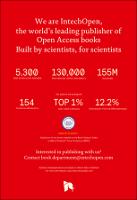Chapter Noninvasive Modalities Used in Spinal Cord Injury Rehabilitation
| dc.contributor.author | del Ama-Espinosa, Antonio | |
| dc.contributor.author | Moreno, Juan | |
| dc.contributor.author | Laczko, Jozsef | |
| dc.contributor.author | Pascual-Valdunciel, Alejandro | |
| dc.contributor.author | Barroso, Filipe O. | |
| dc.contributor.author | Torricelli, Diego | |
| dc.contributor.author | L Pons, Jose | |
| dc.date.accessioned | 2021-06-02T10:12:18Z | |
| dc.date.available | 2021-06-02T10:12:18Z | |
| dc.date.issued | 2019 | |
| dc.identifier | ONIX_20210602_10.5772/intechopen.83654_443 | |
| dc.identifier.uri | https://library.oapen.org/handle/20.500.12657/49329 | |
| dc.description.abstract | In the past three decades, research on plasticity after spinal cord injury (SCI) has led to a gradual shift in SCI rehabilitation: the former focus on learning compensatory strategies changed to functional neurorecovery, that is, promoting restoration of function through the use of affected limbs. This paradigm shift contributed to the development of technology-based interventions aiming to promote neurorecovery through repetitive training. This chapter presents an overview of a range of noninvasive modalities that have been used in rehabilitation after SCI. Among others, we present repetitive transcranial magnetic stimulation (rTMS), transcranial direct current stimulation (tDCS), surface electrical stimulation tools such as transcutaneous electrical spinal cord stimulation (tcSCS), transcutaneous electrical nerve stimulation (TENS), and functional electrical stimulation (FES), as well as its integration with cycling training and assistive robotic devices. The most recent results attained and the potential relevance of these new techniques to strengthen the efficacy of the residual neuronal pathways and improve spasticity are also presented. Future efforts toward the widespread clinical application of these modalities include more advances in the technology, together with the knowledge obtained from basic research and clinical trials. This can ultimately lead to novel customized interventions that meet specific needs of SCI patients. | |
| dc.language | English | |
| dc.subject.classification | thema EDItEUR::M Medicine and Nursing::MB Medicine: general issues | en_US |
| dc.subject.other | spinal cord injury, rehabilitation, noninvasive modalities, functional electrical stimulation, transcranial magnetic stimulation, exoskeletons | |
| dc.title | Chapter Noninvasive Modalities Used in Spinal Cord Injury Rehabilitation | |
| dc.type | chapter | |
| oapen.identifier.doi | 10.5772/intechopen.83654 | |
| oapen.relation.isPublishedBy | 09f6769d-48ed-467d-b150-4cf2680656a1 | |
| oapen.relation.isFundedBy | H2020-IOT-2017 | |
| oapen.grant.number | 611695 | |
| oapen.grant.number | 779982 | |
| oapen.grant.acronym | BIOMOT | |
| oapen.grant.acronym | EXTEND |

